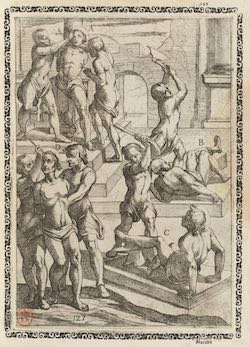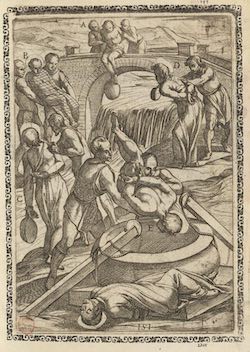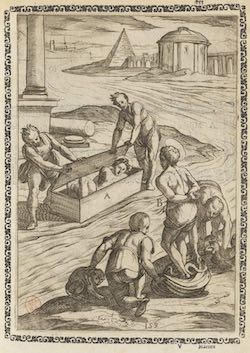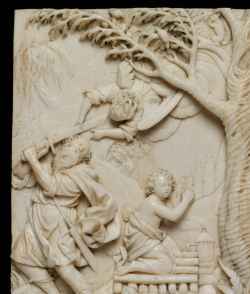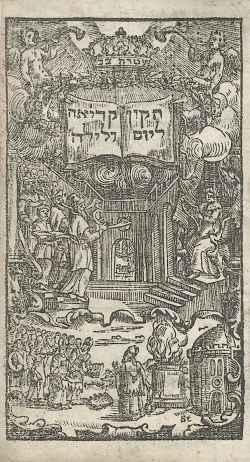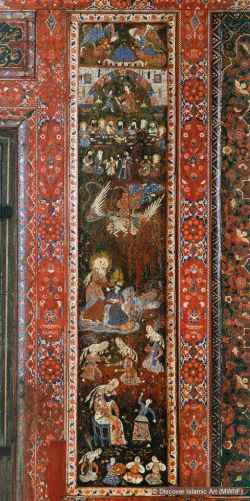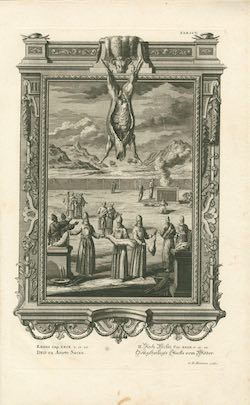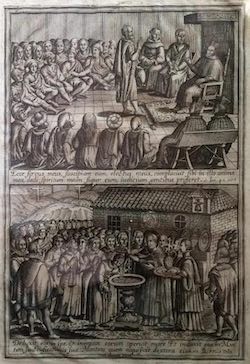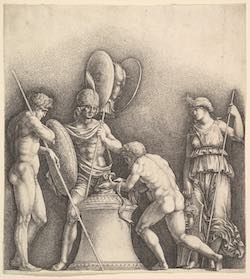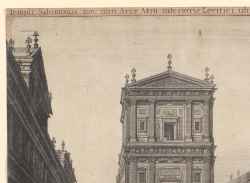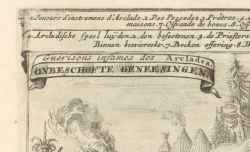Topic: 2. Sacrifice and religion: Comparisons, Antiquarians, Anthropology (16th-18th Century)
Religious sacrifices across various cultures and contexts sparked widespread interest in Early Modern Europe. As Christianity expanded into regions inhabited by "infidels" and "pagans", Europeans encountered a diverse array of sacrificial customs, ranging from the Sati rituals in India to the Aztec sacrifices in the Americas. This cross-cultural exposure captivated a wide audience, including theologians, philosophers, political thinkers, antiquarians, orientalists, missionaries, poets, artists, and even the general public. These encounters broadened the European understanding of sacrifice and led to a critical reassessment of classical and biblical sacrificial rites. This section includes:
- Sources: A selection of early modern printed materials, which include descriptions of the Americas, Asia, and Africa, alongside antiquarian and philological studies on religious sacrifice in classical antiquity and beyond. It also presents early modern works of ethnological observations and the first attempts to compare different sacrificial practices in various traditions and contexts, laying the groundwork for disciplines like the history of religions and anthropology.
- Iconographic Representations: A rich collection of images from the 16th to 18th centuries, illustrating a range of sacrificial rituals and practices as seen in different cultural and geographical contexts.
- Related Bibliography: An extensive bibliography spanning scholarly works from the 19th to 21st centuries, providing contemporary analyses and interpretations of these early studies and observations.
Tortures and Infamy of the Martyrs, 2 (1591)
from: A. Gallonio, Trattato degli instrumenti di martirio e delle varie maniere di martoriare usate da' gentilicontro christiani, trattato de gli instrumenti di martirio, e delle varie maniere di martoriare usate da' gentili contro christiani, descritte et intagliate in rame, Roma, Donangeli 1591, n. 127
Ways in which Martyrs were Drowned (1591)
from: A. Gallonio, Trattato degli instrumenti di martirio e delle varie maniere di martoriare usate da' gentilicontro christiani, trattato de gli instrumenti di martirio, e delle varie maniere di martoriare usate da' gentili contro christiani, descritte et intagliate in rame, Roma, Donangeli 1591, n. 151
Ways in which Martyrs were Drowned, 2 (1591)
from: A. Gallonio, Trattato degli instrumenti di martirio e delle varie maniere di martoriare usate da' gentilicontro christiani, trattato de gli instrumenti di martirio, e delle varie maniere di martoriare usate da' gentili contro christiani, descritte et intagliate in rame, Roma, Donangeli 1591, n. 153
The Sacrifice of Isaac (ivory group) (1679)
from: South Germany
V&A Museum, London
The Sacrifice of Isaac. A Christian citizen in Aleppo commissioned the painted panels of the walls of the entrance room in his house. Wood, multi-layered painting (1601-1603)
from: Aleppo
Museum of Islamic Art at the Pergamon Museum Source: [https://islamicart.museumwnf.org/database_item.php?id=object;ISL;de;Mus01;39;en&pageD=N&cp]
The Sacrifice of Isaac (1716)
from: Germany
The National Library of Israel, Jerusalem, Israel Ms. Heb. 8° 2380 (Book of Evronot, fol. 80v)
Aaron and his sons sacrificing a ram, as described in Exodus 29:13-22 (1731)
from: Scheuchzer, Johann Jakob, Physica Sacra (Kupfer-Bibel), Augsburg and Ulm, Christian Ulrich Wagner, 1731-1735, vol. 2, p. 324
Lowcountry Digital Library
Discovery of the leaden books of Sacromonte (Granada) [1741]
from: Heredia Barnuevo, Diego N. Mystico ramillete historico, chronologyco, panegyrico, texido de las tres fragrantes flores del nobilissimo antiguo origen, exemplarissima vida, y meritissima fama posthuma del Ambrosio de Granada ... el Illmo. y V.Sr. Don Pedro de Castro, Vaca y Quiñones ... Arzobispo de Granada, y Sevilla, y Fundador Magnifico de la Insigne Iglesia Colegial del Sacro Monte Illipulitano, Granada, Imprenta Real, 1741.
Discovery of the leaden books of Sacromonte (Granada) [1741]
from: Heredia Barnuevo, Diego N. Mystico ramillete historico, chronologyco, panegyrico, texido de las tres fragrantes flores del nobilissimo antiguo origen, exemplarissima vida, y meritissima fama posthuma del Ambrosio de Granada ... el Illmo. y V.Sr. Don Pedro de Castro, Vaca y Quiñones ... Arzobispo de Granada, y Sevilla, y Fundador Magnifico de la Insigne Iglesia Colegial del Sacro Monte Illipulitano, Granada, Imprenta Real, 1741.
Ecce Servus meus, Suscipiam eum, electus meus, complacuit sibi in illo anima mea, dedi Spiritum meum super eum, iudicium gentibus proferet... Isa. 42. Deduxit eos in Spe, et Inimicos eorum operuit mare Et induxit eos in Montem Sanctisficationis Sive Montem quem acquisivit dextera eius. Ps. 77. [1620]
from: Antolínez de Burgos, J. Historia eclesiástica de Granada [manuscript, composed around 1620 and conserved in the Library and Historical Archives of the Abadía de Sacromonte, Granada].
Martyrs of Sacromonte (Granada) [1741]
from: Heredia Barnuevo, Diego N. Mystico ramillete historico, chronologyco, panegyrico, texido de las tres fragrantes flores del nobilissimo antiguo origen, exemplarissima vida, y meritissima fama posthuma del Ambrosio de Granada ... el Illmo. y V.Sr. Don Pedro de Castro, Vaca y Quiñones ... Arzobispo de Granada, y Sevilla, y Fundador Magnifico de la Insigne Iglesia Colegial del Sacro Monte Illipulitano, Granada, Imprenta Real, 1741.
The ritualistic murder of a Christian child by a group of Jewish men; the child standing at centre, surrounded by five figures who are restraining, cutting him and gathering his blood; in an ornament frame with Gothic Laubwerk along upper edge; illustration to Ubertino Pusculino, 'Duo libri Symonidos de Judaeorum perfidia', Augsburg: Johan Ottmar, 1511. (1511)
from: Ubertino Pusculino, 'Duo libri Symonidos de Judaeorum perfidia', Augsburg: Johan Ottmar, 1511
Bristih Museum
Four Classical Figures (Pagan Sacrifice) (1638)
Metropolitan Museum, New York
Burnt offerings in the Temple of Jerusalem from within the Court of the Levites (1660)
from: plate from the 'Restoration' Bible 2 vols., published by John Ogilby, Cambridge, 1660
National Gallery of Victoria, Melbourne
In the left foreground a camel is being slaughtered. Religion in Japan. Shown are all kinds of large and small statues of gods. With legend in Dutch and French. (1682)
from: Vries, Simon de. Curieuse aenmerckingen der bysonderste Oost en West-Indische verwonderens-waerdige dingen, deel 3, p. 109. Utrecht: J. Ribbius, 1682
Rijksmuseum, Amsterdam
Japanese mendicants, lepers, muck-eaters, acts of self-immolation, the bathing of “Brahmins and fakirs,” Mexican human sacrifice and deities, and a Turkish dervish. (1682)
from: Simon de Vries (ca. 1580–1629), Curieuse Aenmerckingen der byzondereste Oost en West Indische… dingen (Curious Remarks on the most exceptional East and West Indian… matters), vol. 3 (Utrecht: Johannes Ribbius, 1682)
Rijksmuseum, Amsterdam
Landscape with aspects about sin and penance. On the right of the scene a child is being slaughtered. (1682)
from: Vries, Simon de. Curieuse aenmerckingen der bysonderste Oost en West-Indische verwonderens-waerdige dingen, deel 3, p. 6. Utrecht: J. Ribbius, 1682
Rijksmuseum, Amsterdam
the healers making an offering to an idol asking if it can cure the sick person. As atonement, a number of goats are slaughtered. In the process, the tent of the sick man is incensed. In the background is a thanksgiving feast at an idol. On the right image, a man (according to the text a Jesuit) is being shaved by a toll master in front of some Dutchmen. (1682)
from: Vries, Simon de. Curieuse aenmerckingen der bysonderste Oost en West-Indische verwonderens-waerdige dingen, deel 4, p. 664 en deel 3, p. 596. Utrecht: J. Ribbius, 1682
Rijksmuseum, Amsterdam

